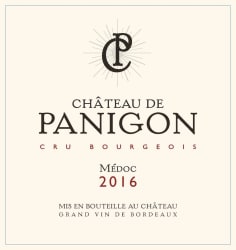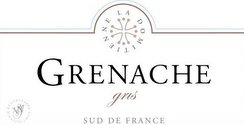Jomain Aligoté
Stirm Calcite White Blend
La Domitienne Grenache Gris Rosé
Freelander Pinot Noir
pANiGON médoc bORDEAUX
Fond Croze Cairanne

Jomain Aligoté – Lutte Raisonnée (following some organic practices)
A true family enterprise, brothers Philippe and Christophe Jomain, along with sister Catherine, launched this Chardonnay-focused Cote de Beaune domain in 1992 with vines inherited from their father, Marc. With precious parcels in four of Puligny’s premier crus and almost an acre of hallowed ground in the Grand Cru Batard Montrachet, Domaine Jomain consistently produces a line of classically elegant white Burgs.
The Jomains tend all their vineyards meticulously by hand with careful eco-sound practices, including bio-alternative vine and soil treatments in lieu of chemicals whenever possible. Harvest is of course also manual. From vineyard to the cellar, gentle handling of their Chardonnay fruit is of paramount importance.
In the cellar, Christophe takes every measure to ensure that the individual character of each terroir is fully expressed by avoiding manipulative technological tricks and excessive use of new oak. The Jomains do like the texture-enhancing effects of extended lees contact with batonnage, but never use more than 25% new barrels during the elevage of their wines.
The Jomain family are best known for creating superb Puligny-Montrachet. Puligny-Montrachet is one of Burgundy’s essential buys for Chardonnay lovers. The small appellation produces some of the world’s finest, purest expressions of the grape.
Aligoté is Burgundy’s “other” white grape, more rarely encountered than Chardonnay; yielding light, citrusy wines. It is also the traditional base ingredient for the Kir cocktail.
A brilliant white from Burgundy, and one of our favorite producers from Puligny Montrachet, the new Jomain Aligoté offers scintillating acidity, saline minerals, and lemony fruit on a full finish. Nice body and complexity for this off-the-beaten-path white variety that’s loved by the French as a companion to Chardonnay. Wonderful with rich cheeses and olives, or try with poached halibut or salmon with a beurre blanc sauce. We are one of the few shops in the country to have this wondrous bottling from Jomain!!

Stirm calcite – Organic, Biodynamic and Natural
Ryan Stirm is a true Riesling fanatic. His arguments for why Riesling works so well in California are hard to refute after tasting his wines. He started his winemaking career in the US, teaming up with the now legendary Justin Willett from Tyler and Lieu Dit. After four years, he ended up working in the Wachau, Austria where he fell further in love with Riesling as well as Grüner Veltliner.
His winemaking philosophy is quite simple: whole cluster press everything, allow for short periods of skin contact, avoid SO2 until fermentation has completed, let indigenous yeast do their jobs, and fine/filter as minimally as possible. The ultimate goal is to let the vineyards shine through.
This bottling, 88% Riesling from Wirz in Cienega Valley, 6% Chardonnay from Glenwood in the Santa Cruz Mtns, and 6% Scheurebe from C5 in Santa Ynez, is an easy-drinking, late summertime wine, perfect for hanging out on the porch, waiting for the sun to set. Dry, with notes of green apple and an intensely zippy minerality, with multitudes of white flowers on the nose.
The grapes were picked by hand over several passes between three different vineyards. At the winery, the grapes were given 24 hours of whole cluster maceration to extract tannins, aroma, and flavor compounds in the skins (Riesling/Scheurebe) and direct press (Chardonnay). No sulfur was added to allow the juice to oxidize. After a 36-hour cold settle in tank, the clean juice was racked off the solids to other barrels for spontaneous fermentation. The wine was sulfured post completion of secondary fermentation with elévage in barrel on fine lees. Racked off fine lees a month prior to bottling. Unfined and unfiltered. 32 ppm free sulfur at bottling, Bottled June 5th, 2021. 340 cases produced.
La Domitienne Grenache Gris – organic
The vineyards are the property of the Bonfils Family and occupy sections in the sub-areas of Minervois and Corbieères. The name La Domitienne is named after the ancient road, Via Domitian which divides the two growing zones, one in the North and the other in the South. The Via Domitia was the Roman road that allowed Roman soldiers to control all of Southern Gaul.
This Grenache Gris Rosé is from St Guilhem le Désert, a commune in the Hérault department in the Occitanie region in southern France. Situated in the narrow valley of the Gellone river where it meets the steep-sided gorge of the Hérault River, Saint-Guilhem-le-Désert is essentially a medieval village located on the Chemin de St-Jacques pilgrim route to Santiago de Compostella.
100% Grenache Gris from 25-year-old vines. After harvest, a 20 day ferment is steel, fermented with indigenous yeast, aged in stainless steel and cement tanks. Trace amounts of sulfur were added at bottling.
Pale, translucent pink. Intense tropical aromatics of papaya and dragon fruit. Bright fruity flavors of fresh papaya and ripe mandarin.
Freelander District One Pinot noir – sustainable
 Vibrant ruby in color, delicious, and very accessible, this is a great example of California Pinot Noir’s hallmark ripeness.
Vibrant ruby in color, delicious, and very accessible, this is a great example of California Pinot Noir’s hallmark ripeness.
Winemaker Larry Levin (formerly of Turnbull and Quintessa) selectively sources the fruit to capture that sun drenched richness without sacrificing balance.
Beautifully perfumed with aromas of crushed strawberries, dark cherry, hibiscus, fresh dill and damp earth. Concentrated on the palate, dark cherries, cola, strawberries and zippy hibiscus swirl about accented by slight oak influenced notes of dill and subtle vanilla.
The grapes were cold soaked for color extraction for about 4/5 days then pressed and fermented in stainless steel.AGINGThe wine was aged for 10 months in a combination of French and American oak with about 20% new.
Aged in French and American oak. It shows baked cherry and violet on the nose, crisp flavors of red currant, baking spice, and vivid strawberries balance the mouthfeel. A touch of toasted oak completes the gentle finish.
Freelander is sourced through select vineyards that produce elegant and impressive wines. Most of the fruit comes from small production vineyard blocks in California’s central valley. Our handcrafted wines are true to varietal, show complex fruit, and have a gentle, well-balanced finish.
Larry Levin is among the most experienced winemakers in the Napa Valley. After completing his Enology degree at UC Davis, Larry spent seventeen years at Dry Creek Vineyard where over 18 vintages he produced more than 15 varietal wines. He has since covered the globe by making wine in New Zealand, Chile, and Australia across all price points and styles. For the previous nine years Larry was head of winemaking at Icon Estates where he oversaw the Franciscan, Mt. Veeder, Robert Mondavi, Estancia, Ravenswood, Quintessa, and Ruffino brands. Larry also consults for wineries in the Stag’s Leap and Oakville districts in Napa and Sonoma.
90 points, Wine Enthusiast: “Crisp flavors of red currant, baking spice and vivid strawberries balance the mouthfeel. A touch of tasted oak completes the finish.
 Chateau de Panigon Médoc – Sustainable
Chateau de Panigon Médoc – Sustainable
Chateau de Panigon benefits from one side of the Atlantic Ocean influences, the other of the presence of the Gironde estuary, providing favorable weather conditions for the development of grape varieties and a maturity of grapes. The vineyard grows on gravel mounds worthy of the best soils of the Medoc. Composed of 45% Cabernet Sauvignon, 50% Merlot and 5% Petit Verdot, the vineyard flourish hillocks on some of the best terroirs in the Medoc.
Château de Panigon is a beautiful estate of 200 acres located in the northern Médoc with about 60 acres planted to vines. Its history goes back to before the French Revolution and was mentioned back in 1850 in the first edition of Bordeaux and its Wines. In the next edition in 1868, Chateau de Panigon was classified as a Cru Bourgeois. So, there is some serious bonified history to the estate.
Situated in the village of Civrac – en – Médoc, about an hour from Bordeaux, the vineyard benefits from the oceanic influence of the nearby Atlantic Ocean as well as their proximity to the Gironde estuary, which together create an ideal climatic condition for the optimum development and maturity of the grapes. Composed of 45% Cabernet Sauvignon, 50% Merlot and 5% Petit Verdot, the vineyard flourishes on gravelly hillocks on some of the best terroirs in the Médoc.
Since 2006, the daughter and the son-in-law of the owners, Corinne Leveilley Dadda and Georges Dadda, have taken over the management of the Château, determined to produce red wines that seriously deliver. In 2016, Château de Panigon obtained the HVE – High Environmental Value- label, a guarantee of quality and respect for the environment.
Their estate vineyards are an average of 28 years old and are grown on an ideal blend of gravel and clay-limestone soils. Harvest is carried out parcel by parcel with manual and mechanical methods. The final wines are aged 100% in French oak (33% new barrels), for 12-18 months.
Château de Panigon seduces with its delicacy and a complex aromatic expression. The nose first displays notes of black fruits: blackberry, blackcurrant, then spreads the toasted notes. The palate is well balanced, long, and round. It reveals melted tannins and opens with a pleasant fruity finish.
 Fond croze cairanne – organic
Fond croze cairanne – organic
Cairanne is a village in the Côtes-du-Rhône appellation, one that due to its high wine quality, is allowed to put the name of the village on the label (like Gigondas, Lirac, Vacqueyras, etc.).
Domaine Fond Croze is located on the outskirts of the town of Cairanne, and this family-run business converted to organic viticulture in the nineties.
Founding patriarch Charles Long first purchased land outside Saint Roman de Malegarde after returning from World War I. His son, Raymond, expanded the vineyards once he started full-time in the business and today, Raymond’s sons Bruno (the winemaker) and Daniel (the vineyard manager) are the 3rd generation. Daniel’s son Guillaume continues the tradition, armed with a degree in enology and viticulture, and some impressive stints at wineries in the US.
The Longs produce a wide range of honest and unpretentious wines from their 200 acres of typical Rhône-ish varietals, distributed among six appellations: Cairanne, Rasteau, Côtes du Rhône Villages Vaison la Romaine, Côtes du Rhône Villages, Côtes du Rhône and I.G.P. Méditerranée, planted to nine different grapes, red and white.
60% Grenache Noir, 20% Carignan, and 20% Mourvèdre from old vines planted on clay-limestone soils on their five-acre estate hillside vineyard in Cairanne.
This wine has a deep garnet color with purplish hues. The first nose is complex and after slight aeration it releases aromas of stewed small black fruits and candied cherry. On the palate, we detect a nice acidity with well-present and structured tannins. This wine offers aromas of black fruits as well as toasted notes on the finish. Complex and well balanced, the finish is long.
90-93 points, Robert Parker’s Wine Advocate: Half Grenache, with the balance split equally between Carignan and Mourvèdre, the 2019 Cairanne is dark and impenetrable in the glass, giving up just brooding aromas of blackberries and dark-skinned plums. It’s full-bodied and tannic at this stage, but the tannins are ripe, adding plush layers of textural interest and lingering gently on the finish.



